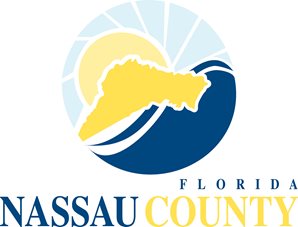Nassau County could be the next “industrial powerhouse”
May 10, 2016
by Derek Gilliam,
 Nassau County isn’t currently an industrial powerhouse, but that could soon change as three projects on opposite ends of the county continue to gain momentum.
Nassau County isn’t currently an industrial powerhouse, but that could soon change as three projects on opposite ends of the county continue to gain momentum.
Laura DiBella took over as the county’s director of economic development about 18 months ago and is currently working to attract hundreds of millions of capital investment into the community.
What’s attracting the companies is simple, she says — fast access to several ports, rail access from two class one railroads and large tracts of undeveloped land. One of the projects is near Yulee, another near the Fernandina Beach area and the last is in western Nassau at the Crawford Diamond Industrial Park.
The most notable could be the Yulee project. County planners, for the last few years, have been busy figuring out the best use of a massive 24,000-acre development that’s owned by timber REIT Rayonier Inc.
The East Nassau Sector Plan will take decades to fully develop, but some development is already taking place.
Rayonier Inc., the world's largest timber-focused real estate investment trust, owns the plot and plans to start construction on a 55,000-square-foot headquarters. The $23 million Wildlight Elementary School is a companion project to Rayonier plans. The timber company has already donated the land and the project is expected to be complete by fall 2017.
EAST NASSAU SECTOR PLAN
DiBella said that development will be Nassau’s “new city.” She said there is already interest from a developer to build a 300-unit multifamily community nearby.
Phase one of the East Nassau Sector Plan includes development rights for 3,200 single-family homes.
“I think the reason this will be a very attractive option for not just companies, but for people is for a community standpoint just how easy it will be to live there,” she said.
The community, which hopes to have its own retail options one day, is located near the River City Market Place and about 10 minutes from the airport, she said.
“It will enhance what we have to offer here. It’s going to provide amenities that we do not have, but also things the region doesn’t offer either,” she said. “We don’t want Nassau to be a bedroom community to Jacksonville. We want Nassau to stand on its own.”
Nassau County is still considered a rural area. With that designation comes additional incentives from the state that could help attract economic development, although Nassau could lose that designation as the state tinkers with the formula used to come up with the definition of rural community.
DiBella said that Nassau County can now offer twice what its more developed neighbors can offer in incentives. A typical incentive offers about $3,000 per job created. Nassau County can offer $6,000 in that state program. The program isn't direct cash payments, but tax abatements.
“That’s a huge advantage,” she said.
There are two projects that DiBella was willing to talk about that could take advantage of the rural designation.
RAYONIER PARTNERING WITH A COMPETITOR
One of them would be a $110 to $130 million capital investment in a company called LingoTech Florida LLC.
LingoTech is a partnership between Rayonier Advanced Materials Inc. and Norwegian-based Borregaard. Rayonier Advanced Materials operates a pulp mill that produces a substance called lignin that Borregard has developed a technology that allows the material to be used in concretes it will sell in North and South America, according to Borregaard.
The Nassau County Board of County Commissioners will discuss economic incentives for this project May 9.
NASSAU THE REGION'S NEW INDUSTRIAL POWERHOUSE?
The other project DiBella talked about involved an unnamed company that could invest a minimum of $170 million in a manufacturing plant at the Crawford Diamond Industrial Park. She said that could be at least 220 jobs for that area. There are multiple phases to this project, she said.
DiBella expects a decision on whether this project will happen by the end of the year.
“The west side of Interstate 95 could become an industrial powerhouse,” she said. “There are less than a dozen sites [across the country] that offer two competitive class one rail capacity with a substantial site next to it that doesn’t have any issues connected with it.”


